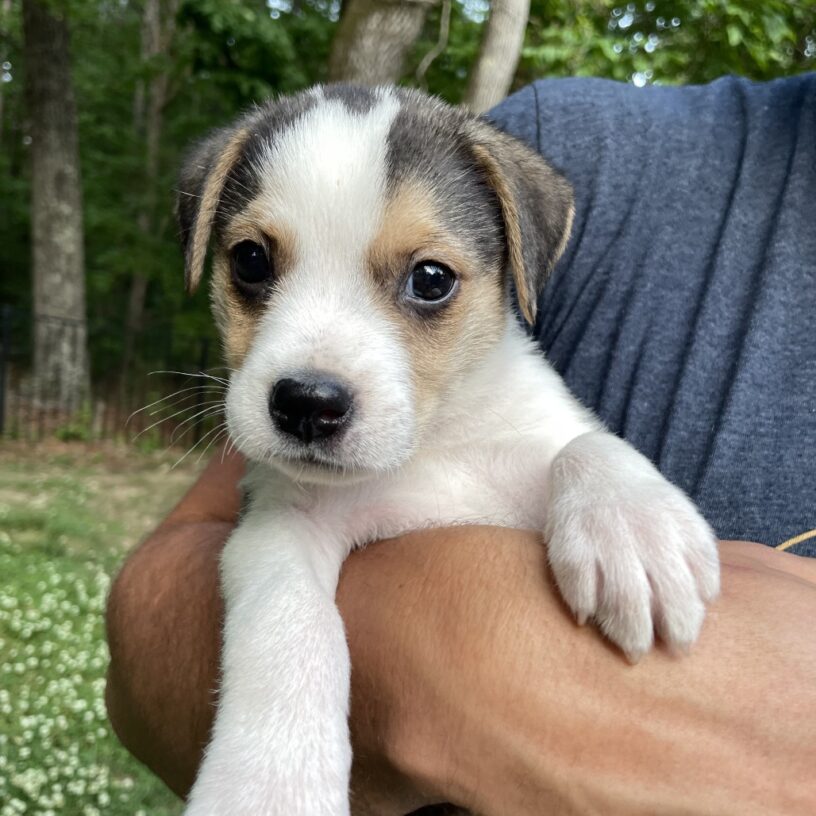Not all rescue puppies come with a pack. Sometimes, there’s just one. Whether the rest of the litter didn’t survive, the mother rejected a weak pup, or the puppy was abandoned entirely, singleton puppies enter the world at a disadvantage. They don’t just miss the warmth and comfort of siblings—they lose a biological support system crucial to their development.
Raising a singleton puppy requires not only attentive care but strategic intervention to fill in the gaps that littermates naturally provide.
What Makes Singleton Puppies Different?
Puppies are born neurologically immature. Littermates provide round-the-clock stimulation, physical pressure, competition, movement, and social cues that help shape healthy development. When there’s no litter, the puppy misses out on:
-
Thermoregulation: Shared body heat helps puppies stay warm between feedings
-
Motor stimulation: Crawling over one another builds muscle tone and coordination
-
Behavioral boundaries: Biting, mouthing, and play help teach limits
-
Emotional security: Constant contact helps reduce crying, stress, and isolation
Without intervention, singletons are at higher risk for:
-
Flat chest syndrome (pectus excavatum)
-
Swimmer’s syndrome (limb splaying and motor delays)
-
Developmental delays in walking and elimination
-
Overdependence on humans
-
Social deficits as they mature
Creating a Litter-Like Environment
The key to raising a healthy singleton is replacing what nature doesn’t provide. Your job is to create a setting that mimics the presence of littermates through physical, sensory, and environmental cues.
Simulating Touch and Pressure
-
Rolled fleece towels, socks, or rice socks can be positioned snugly around the puppy to mimic the feeling of littermates pressed against them
-
Use a Snuggle Puppy or heartbeat toy with a warm pack for comfort
-
Encourage rest in nest-like spaces with soft walls, such as a donut bed or a fleece-lined basket
Note: Avoid stuffed animals with button eyes, loose stitching, or choking hazards.
Maintaining Ideal Warmth
Without littermates, singletons lose body heat much faster. Keep temperatures consistent using:
-
Heating pads set to low and always covered with fleece (never direct contact)
-
Incubators or heating discs
-
Room temperature of 80–85°F during the first week, reducing slowly as the puppy grows
Always use a rectal thermometer to confirm that the puppy’s body temp is 96–100°F. Puppies too cold to suckle should be warmed before feeding.
Promoting Physical Development
Without other puppies crawling over them, singletons can quickly develop asymmetrical muscle tone, flattened ribs, or delayed reflexes.
Tummy Time and Movement Stimulation
-
Start “tummy time” early—lay the puppy on various safe textures like yoga mats, foam pads, or fleece
-
Reposition the puppy during and between feedings to avoid pressure sores and promote balanced movement
-
Gently massage limbs and rotate joints during handling to stimulate proprioception
-
Use a rolled towel under the chest once the puppy starts attempting to crawl, to support proper posture and avoid swimmer syndrome
If you notice the puppy struggling to move normally by 2.5–3 weeks, seek veterinary or physical therapy input early.
Feeding and Elimination Considerations
Feeding a singleton often means you can give more undivided attention—but it also makes it easier to accidentally overfeed. Stick to weight-based feeding volumes (typically 1cc for every 1 oz of body weight, fed every 2-4 hours).
Urination and Defecation
Singletons require manual stimulation before and after every feeding, just like puppies with littermates.
-
Use a soft tissue, baby wipe, or cotton pad to gently stimulate the genital and anal areas
-
Clean and dry the area after each elimination to prevent urine scald
-
Watch for signs of constipation or dehydration (straining, no stool, dark yellow urine)
Without siblings jostling them, singletons may take longer to develop regular bowel patterns.
Preventing Behavioral Overdependence
While singleton puppies naturally bond with their caregiver, overattachment can create behavior issues such as separation anxiety, resource guarding, or poor bite inhibition later.
Tips for Balanced Bonding
-
Let the puppy spend time alone in a crate or pen, even if you’re nearby
-
Use heartbeat toys and soft music to encourage self-soothing
-
Avoid carrying or cuddling constantly—even if it’s tempting
-
Provide a variety of enrichment by 3 weeks old (textures, mild sounds, supervised exploration)
Safe Socialization Options
If you have other fully vaccinated, dog-friendly adult dogs, they can be introduced gradually around 3.5–4 weeks of age, always under close supervision. Adult dogs help:
-
Teach body language and social boundaries
-
Provide non-human interaction
-
Encourage exploratory behavior
If a Litter Is Available
If another foster group is close in age and medically stable, integration can be considered around 2–3 weeks. This is ideal, but not always possible.
Managing Weaning and Play
Singletons often wean earlier and more aggressively since they aren’t competing for food. Offer gruel or softened kibble in shallow bowls around 3.5 to 4 weeks, and monitor for overeating or food guarding.
Encourage Healthy Play Behavior
-
Begin interactive toy play with safe plush, fleece strips, or teething rings
-
Redirect biting to toys, not human hands, as early as possible
-
Avoid roughhousing or hand play that reinforces nipping
Socialization Checklist for 4–8 Weeks
Proper socialization is crucial for singletons who lack natural exposure to other puppies.
Introduce the following in short, positive sessions:
-
Gentle human handling from multiple people
-
Everyday sounds (vacuums, doors, music, kids)
-
Surfaces (tile, grass, carpet, wobble boards)
-
Puppy-safe outings in a covered crate or stroller
-
Vet handling simulations (ear touches, paw checks)
Final Thoughts
Raising a singleton isn’t harder—it’s just different. These puppies come into the world already missing a layer of natural support, but with the right care, they thrive just as well as any litter-raised pup.
As their foster, you’re not just their bottle and blanket—you’re their whole world. And while they may not have siblings to guide them, they have you—and that’s more than enough.

